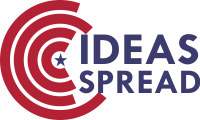Enhancing Tobacco Control Policies Among Youth and College Students: Limitations and Future Directions
Abstract
Tobacco use is still a serious issue among youth and college students in the United States. Although the government, especially the Department of Health and Human Services, has made efforts through policies like taxation, smoke-free laws, and advertising bans, these methods have not been effective enough. This paper discusses the main problems of each policy: the tax rate is not high enough to stop students from buying cigarettes, smoke-free policies are not fully enforced especially in outdoor areas, and advertising bans are not strict or complete. To improve the situation, the paper suggests raising the tax on cigarettes nationwide, making all college campuses completely smoke-free (both indoors and outdoors), and banning all forms of tobacco advertising and promotion. These changes could help lower the smoking rate among youth and college students, protect their health, and reduce future harm. Though these contributions may seem small at first, they are necessary steps toward solving a long-term public health problem.
References
[2] Centers for Disease Control and Prevention. (n.d.). Cigarette smoking in the United States. Retrieved July 28, 2025, from https://www.cdc.gov/tobacco/campaign/tips/resources/data/cigarette-smoking-in-united-states.html
[3] Lushniak, B. D. (n.d.). The Health consequences of smoking—50 years of progress: a report of the Surgeon General. Retrieved July 28, 2025, from https://stacks.cdc.gov/view/cdc/21569
[4] Coleman, S. R. M., Gaalema, D. E., Nighbor, T. D., Kurti, A. A., Bunn, J. Y., & Higgins, S. T. (2019). Current cigarette smoking among U.S. college graduates. Preventive Medicine, 128, 105853. https://doi.org/10.1016/j.ypmed.2019.105853
[5] McGrew, J. L. (n.d.). History of Tobacco Regulation. Retrieved July 28, 2025, from https://www.druglibrary.org/schaffer/library/studies/nc/nc2b_3.htm
[6] Chaloupka, F., & Pacula, R. (2001). The Impact of Price on Youth Tobacco Use. National Cancer Institute.
[7] Kong, A. Y., & King, B. A. (2021). Boosting the Tobacco Control Vaccine: Recognizing the role of the retail environment in addressing tobacco use and disparities. Tobacco Control, 30(e2), e162–e168. https://doi.org/10.1136/tobaccocontrol-2020-055722
[8] Warner, K. E., & Mendez, D. (2010). Tobacco control policy in developed countries: Yesterday, today, and tomorrow. Nicotine & Tobacco Research, 12(9), 876–887. https://doi.org/10.1093/ntr/ntq125
[9] Centers for Disease Control and Prevention. (n.d.). State Excise Tax Fact Sheet. Retrieved July 28, 2025, from https://www.cdc.gov/statesystem/factsheets/excisetax/ExciseTax.html
[10] Chaloupka, F. J., & Liccardo Pacula, R. L. (n.d.). The Impact of Price on Youth Tobacco Use (Monograph 14, Chapter 12). Retrieved July 28, 2025, from https://cancercontrol.cancer.gov/sites/default/files/2020-06/m14_12.pdf
[11] Centers for Disease Control and Prevention. (n.d.). Secondhand smoke policies. Retrieved July 28, 2025, from https://www.cdc.gov/tobacco/secondhand-smoke/policy.html
[12] U.S. Department of Education, National Center for Education Statistics. (n.d.). Indicator C-SA: Cigarette smoking among students. Retrieved July 28, 2025, from https://nces.ed.gov/programs/coe/indicator_csa.asp
[13] Seo, D., Macy, J. T., Torabi, M. R., & Middlestadt, S. E. (2011). The effect of a smoke-free campus policy on college students' smoking behaviors and attitudes. Preventive Medicine, 53(4-5), 347–352. https://doi.org/10.1016/j.ypmed.2011.07.015
[14] Harris, K., Stearns, J. N., Kovach, R. G., & Harrar, S. W. (2009). Enforcing an outdoor smoking ban on a college campus: Effects of a multicomponent approach. Journal of American College Health, 58(2), 121–126.
[15] World Health Organization. (2008). WHO report on the global tobacco epidemic, 2008: The MPOWER package. https://www.who.int/publications/i/item/9789241596282
[16] Freeman, B., Watts, C., & Astuti, P. A. S. (2022). Global tobacco advertising, promotion and sponsorship regulation: What’s old, what’s new and where to next? Tobacco Control, 31, 216–221.
[17] Reid, J. L., Manske, S. R., & Leatherdale, S. T. (2008). Factors related to adolescents’ estimation of peer smoking prevalence. Health Education Research, 23(1), 81–93.
[18] Burton, D., Graham, J. W., Johnson, C., Uutela, A., Vartiainen, E., & Palmer, R. F. (2010). Perceptions of smoking prevalence by youth in countries with and without a tobacco advertising ban. Journal of Health Communication, 15(6), 656–664. https://doi.org/10.1080/10810730.2010.499595
[19] Saffer, H., & Chaloupka, F. (2000). The effect of tobacco advertising bans on tobacco consumption. Journal of Health Economics, 19, 1117–1137.
[20] Bray, F., Laversanne, M., Sung, H., et al. (2024). Global cancer statistics 2022: GLOBOCAN estimates of incidence and mortality worldwide for 36 cancers in 185 countries. CA: A Cancer Journal for Clinicians, 74(3), 229–263. https://doi.org/10.3322/caac.21834
[21] Mackay, J. (2006). The Cancer Atlas. American Cancer Society.

This work is licensed under a Creative Commons Attribution 4.0 International License.
Copyright for this article is retained by the author(s), with first publication rights granted to the journal.
This is an open-access article distributed under the terms and conditions of the Creative Commons Attribution license (http://creativecommons.org/licenses/by/4.0/).









1.png)














